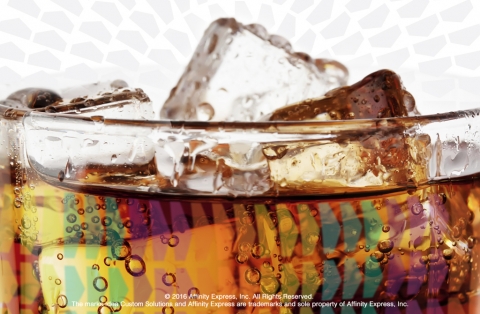Over the last century or so, the concept of a brand has evolved into something that is very important to businesses of every size, as well as universities and even non-profits.
One example of a universally known brand is Coca-Cola. The beverage maker’s image has consistently been one of the most innovative companies, even though its flagship product has changed very little over 120 years. Coke’s brand is identified by its logo, but also its use of the color red, the shape of it bottles and its association with everything from Santa Claus to Michael Jackson, polar bears and bottles featuring people’s first names.

Yet perfect branding isn’t just for big corporations. Equally iconic breast cancer awareness is nearly synonymous with the color pink, with “Go Pink” dominating everywhere from NFL football fields to movie theaters to Chicago buildings. As a result, The Susan G. Komen Breast Cancer Foundation has become the most widely-known and best-funded breast cancer organizations (and one of the most known brands) in the U.S.
A few years ago Forbes asked: what is a brand anyway? Whether the author of the article, Jerry McLaughlin, set out to provide an answer or just start a conversation, a brand is the embodiment of a variety of things.
We know that a brand is not simply a name. Nor is it just a logo. Experts at the Harvard Business Review went so far as to declare a few years ago that a logo is not a brand. However, exactly what a brand is (and what it isn’t) may be debatable and hard to describe.
What most of us do agree is that a brand — if truly powerful — stands on its own. When you conjure up a brand visually or with words, you know what it means, what it stands for, and what the underlying product or service is instantly. A brand also tells us more about what we are buying. Hopefully, this is more than just a product. Is yours?
Values and Standards
When you think about your brand imagine that, like a person, it has a voice. What would your brand say? Of course we might think to look to big agencies for guidance on this. But last month a magazine called Industrial Distribution eloquently asked and answered this question.
What your brand should say about your company varies depending on the product, market and customers. At a minimum you should ask yourself “Who the heck are we”, as well as what makes you different and what you stand for as a company and a partner to your customers.
You should also be sure to ask another question: what does your brand say about you? Do customers have to wait in line? Do you have strict policies they have to accept? Do you rush people off the phone? Is your website outdated?
Ultimately, your brand should speak your values, herald your standards and tell the world your values.
Experience, Look and Feel
Long before any of us had iPhones, Apple was nearly left for dead in the 1990s. Then in late 2001, they introduced a new music device called the iPod, which might have seemed to some way outside Apple’s expertise as a computer maker.
In branding the iPod — and eventually a whole new range of products for a decade to come — Apple took a stab at something else unusual and revolutionary. White earphones or “earbuds” not only made it stand out, differentiating it from competitors the way the compact size and high-quality sound of Sony’s Walkman did years earlier. Plus, Apple’s dancing silhouettes wearing them in ads embodied a new energy, Apple’s legendary reboot, and the zeitgeist of technology that still grows today.
For Apple, “You always had to find a story to tell and create a narrative that made that product appealing” as brand and marketing specialist Allesandra Ghini points out in Fast Company. More importantly, by fashioning a new experience for its users, versus just a new tagline or logo, the firm pioneered an entirely new way to enjoy music while making Apple’s brand monumentally stronger than ever before.
Telling a Story
Another aspect of brands that we’ve heard before is that they tell stories. Again, this concept of the brands a story isn’t just touchy-feely stuff whipped up by ad execs in skyscrapers. As Packaging Digest points out, humans have been telling stories for thousands of years. Everything from the shape, color, and feel of the materials of your product or how your company communicates can tell your story.
But it is also important to be good at telling your story. As The Financial Brand tells banks, credit unions, and other businesses in the often black-and-white banking world, companies do best when they leverage their resources. Don’t just rely on paid ads and taglines to do your brand storytelling and marketing. Engage employees to help tell your story and offer up what is unique about you, working at your company and what you offer those who do business with you.
By taking a moment to discover what your brand can, should and does say about you, you will not only provide your prospects and customers with more information to act on, you will paint a picture in their minds that will be hard to forget.
Our process at Idea Custom Solutions uses a thorough creative brief to help clients answer the important questions so the logos we design for them (as part of our Custom Creative suite of services) really tell their brand stories.

Add new comment